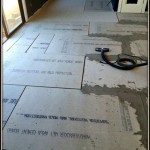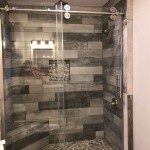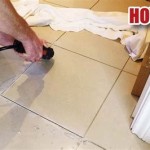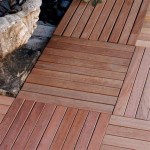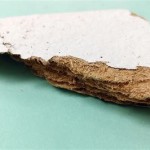Can You Put Wall Tiles On Plasterboard? A Comprehensive Guide
The question of whether wall tiles can be directly applied to plasterboard is a common one for homeowners undertaking bathroom or kitchen renovations. While the short answer is generally yes, there are crucial considerations that need to be addressed to ensure a successful and long-lasting tiling project. Improper preparation or inadequate support can lead to tile delamination, cracking grout, and ultimately, costly repairs. This article will delve into the factors affecting the suitability of plasterboard for tiling, the necessary preparations, and the correct procedures to follow for a professional finish.
Plasterboard, also known as drywall or gypsum board, is a widely used building material providing a smooth surface for painting or wallpapering. Its composition typically includes a gypsum core encased in paper. While plasterboard is relatively lightweight and easy to install, its inherent properties require careful assessment before considering it as a substrate for tiling. The key lies in the plasterboard’s ability to withstand the weight of the tiles and the moisture present in a wet environment.
Understanding Plasterboard Types and Suitability
Not all plasterboard is created equal. There are different types designed for specific applications, and selecting the appropriate type is paramount when planning to tile. Standard plasterboard, often white or grey in color, is generally unsuitable for tiling in areas prone to moisture, such as bathrooms and kitchens. Moisture-resistant plasterboard, typically green or blue, is specifically designed to withstand damp conditions and is the recommended choice for tiling in these environments. It incorporates additives that reduce water absorption and inhibit mold growth.
The thickness of the plasterboard also plays a significant role in its load-bearing capacity. Thicker plasterboard, usually 12.5mm or 15mm, provides greater rigidity and support, making it a more suitable base for heavier tiles. The specific weight limit that plasterboard can support varies depending on the manufacturer and the installation method, but generally, moisture-resistant plasterboard that is at least 12.5mm thick is considered adequate for most wall tile applications.
Furthermore, it's crucial to inspect the existing plasterboard before tiling. Any signs of damage, such as cracks, water stains, or crumbling areas, indicate underlying problems that need to be addressed. Attempting to tile over damaged plasterboard will inevitably lead to failure, as the underlying issues will compromise the adhesion of the tiles. Repairing or replacing the damaged sections is essential before proceeding.
Preparing Plasterboard for Tiling: A Step-by-Step Guide
Proper preparation is the foundation of a successful tiling project on plasterboard. This process involves several crucial steps that ensure the plasterboard is clean, stable, and properly primed to receive the tiles. Skipping or neglecting any of these steps can significantly increase the risk of tile failure.
Firstly, the plasterboard surface must be thoroughly cleaned to remove any dust, dirt, or debris. This can be achieved by wiping the surface with a damp cloth or using a vacuum cleaner with a brush attachment. Ensure the surface is completely dry before proceeding to the next step. Any residual contaminants can interfere with the adhesion of the tile adhesive.
Secondly, apply a suitable primer designed for use on plasterboard before tiling. This primer serves several important functions. It seals the porous surface of the plasterboard, preventing it from absorbing too much moisture from the tile adhesive. It also improves the adhesion between the plasterboard and the adhesive, creating a stronger bond. Choose a primer specifically recommended for tiling applications and follow the manufacturer's instructions carefully.
Thirdly, if the plasterboard joints are not properly taped and filled, they can become weak points that are susceptible to cracking under the weight of the tiles. Ensure all joints are taped with jointing tape and filled with jointing compound. Sand the compound smooth once it has dried to create a seamless surface. This step is crucial for preventing movement and ensuring a uniform surface for tiling.
For wet areas, consider applying a waterproof membrane over the primed plasterboard. This membrane provides an additional layer of protection against moisture penetration, preventing potential damage to the plasterboard and the underlying structure. Applying a waterproof membrane is particularly important in shower areas and around bathtubs.
Choosing the Right Tile Adhesive and Grout
Selecting the appropriate tile adhesive and grout is as critical as preparing the plasterboard correctly. The adhesive must be compatible with both the plasterboard substrate and the chosen tile type. Different types of tiles, such as ceramic, porcelain, and natural stone, require different types of adhesives. Using the wrong adhesive can result in poor adhesion and tile delamination.
A flexible tile adhesive is generally recommended for tiling on plasterboard. This type of adhesive can accommodate minor movements in the plasterboard without cracking or losing its bond. Flexible adhesives are particularly important in areas subject to temperature fluctuations or vibrations. Check the adhesive packaging for suitability for use with plasterboard and the specific tile type you are using.
The choice of grout is equally important for achieving a waterproof and aesthetically pleasing finish. A flexible grout is recommended for use with flexible adhesive. This type of grout can withstand minor movements without cracking. Consider using an epoxy grout in areas that are frequently exposed to water, as it is highly waterproof and resistant to stains and mildew.
Application of the adhesive should follow the manufacturer's instructions regarding mixing ratios, open time, and curing time. Use a notched trowel to apply the adhesive evenly to the plasterboard surface. The size of the notches should be appropriate for the size and type of tiles being used. Press the tiles firmly into the adhesive, ensuring full contact and proper alignment. Use tile spacers to maintain consistent grout lines. After the adhesive has cured according to the manufacturer's instructions, apply the grout, ensuring it fills all the gaps between the tiles. Clean off any excess grout from the tile surfaces and allow the grout to cure fully before exposing the tiled area to water.
The weight of the tiles should also be considered. Large format tiles or tiles made from heavy materials, such as natural stone, may require additional support to ensure the plasterboard can handle the load. In such cases, reinforcing the plasterboard with additional screws or installing a backer board might be necessary. Consult with a professional tiler or structural engineer to determine the best course of action.
Regular maintenance is essential for preserving the integrity of the tiled surface. Clean the tiles and grout regularly with a mild detergent and water. Avoid using abrasive cleaners, as they can damage the tile surfaces and grout. Inspect the grout lines periodically for cracks or damage and repair them promptly to prevent water penetration. By following these guidelines, a successful and long-lasting tiling project on plasterboard can be achieved.

Can You Tile Onto Plasterboard A Comprehensive Guide Tiles4less

How To Tile Onto Plasterboard Warehouse

How To Install Tiles On A Gypsum Wall Pma Imperio

Tiling On Damaged Plasterboard
Can You Tile Onto Plasterboard Straight

Wall Tile Installation Methods Doctor

Top 5 Bathroom Installation Costs Guru

Solved Tiling Onto Gyprock Bunnings Work Community

Can You Tile Onto Plasterboard Tips And Tricks

Can You Tile Over Drywall Master Building Materials Blog
Related Posts


